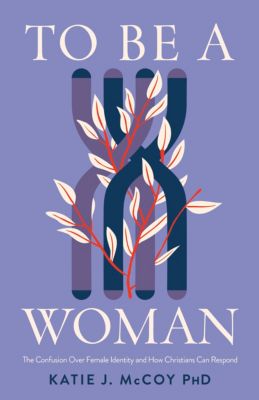
We are Christ’s ambassadors, messengers entrusted with good news for those with gender dysphoria. He offers wholeness.
By Katie J. McCoy
Five years after she began to detransition from identifying as a man, Keira experienced a sign she was becoming herself again: She could cry. When she was flooded with testosterone, she—like many other trans men—had found herself unable to release her emotions. She had a lot to cry about.
Before she was legally an adult, Keira had endured overwhelming setbacks. Her parents divorced when she was young. Her mother was an alcoholic with mental illness. And her father was distant. She was a tomboy who preferred playing sports with the boys in school.
Upon the onset of puberty, she found herself attracted to other girls and wondered what was wrong with her. Her mom asked her if she was a boy, which sent her into a downward spiral of gender confusion.
“A generation of girls is manifesting their pain through transgender identities, while those charged with their care neglect the sources of their mental suffering.” — @BlondeOrthodoxy Click To TweetWhen she was referred to the Gender Identity Development Service clinic in London, she insisted she needed to transition. “It was the kind of brash assertion that’s typical of teenagers,” she shares. “What was really going on was that I was a girl insecure in my body who had experienced parental abandonment, felt alienated from my peers, suffered from anxiety and depression, and struggled with my sexual orientation.”
A few surface-level conversations later, doctors granted Keira her wish without ever addressing the issues behind her gender dysphoria.
I wish her experiences were rare. But a generation of girls is manifesting their pain through transgender identities, while those charged with their care neglect the sources of their mental suffering.
Recognizing the brokenness
As we consider the beliefs and practices within gender ideology, we must never forget the human beings affected by it. Despite our culture’s unmatched acceptance of gender nonconformity and support for gender transition, suicide rates continue to rise. The “cures” are causing greater harm. Gender ideology exploits their vulnerability and calls it health care.
“As we consider the beliefs and practices within gender ideology, we must never forget the human beings affected by it.” — @BlondeOrthodoxy Click To TweetBehind these headlines are real people—confused and wounded people who need spiritual and psychological care. Gender dysphoria is a genuine condition in which someone feels as though she’s been born in the wrong body. It includes acute, psychological distress, sometimes inducing tendencies to self-harm or suicide. It is a complex condition and is often rooted in deep-seated pain and misguided beliefs about one’s gender.
People with gender dysphoria often feel isolated and alienated. Like many internal afflictions, gender dysphoria can also induce physical symptoms. One gender dysphoric person described the feeling as “an electric current” that makes for aching joints and a turning stomach. Another described it as a “numb but painful” feeling throughout the body. “Painful.” “Not being able to feel at home in your own body.”
Responding like Jesus
In Jesus’s time, being sick or disabled came with stigma and shame. You may have been forbidden from going into the temple, which conveyed the ceremonial purity God required of His people to approach Him. In many cases, you’d be prevented from working, marrying, or having a family, which was essential for social relationships and economic security in an ancient, agrarian society. You were an outsider, marginalized, cut off from the community. In an honor/shame culture like the Bible’s, this was devastating.
Jesus dropped everything when He met people with these kinds of needs. He broke religious traditions and drew the ire of the social elite in order to help them. To be physically healed meant more than recovery from a condition. It meant being restored to a community. Those whom Jesus restored didn’t remain marginalized.
“Jesus gave His body to recover and restore those who feel alienated from their bodies. Better still, He brings them into the body of Christ.” — @BlondeOrthodoxy Click To TweetHe brought them from isolation to connection, from alienation to acceptance. The affliction of gender confusion or dysphoria may not be outwardly visible. But overwhelmingly, the women and girls suffering from it feel every bit as alienated—not only from others but also from themselves.
Were Jesus walking among us today, I can’t help but wonder how He’d respond to the lonely girl who feels she doesn’t fit or to the broken woman trying to heal herself of a soul-deep wound. He would be as He always has been—infinitely kind, tenderhearted, patient, understanding, and deeply moved by her pain. And He would love her enough to tell her the truth in a spirit of gentleness and grace.
We are His ambassadors, messengers entrusted with good news: They don’t have to settle for their brokenness. He offers wholeness. He gave His body to recover and restore those who feel alienated from their bodies. Better still, He brings them into the body of Christ.

Katie J. McCoy
Katie is the author of To Be a Woman: The Confusion Over Female Identity and How Christians Can Respond. She holds a PhD in Systematic Theology from Southwestern Baptist Theological Seminary and serves as Director of Women’s Ministry at Texas Baptists.
For permission to republish this article, contact Marissa Postell Sullivan.
Excerpted with permission from To Be a Woman: The Confusion Over Female Identity and How Christians Can Respond by Katie McCoy. Copyright 2023, B&H Publishing.












